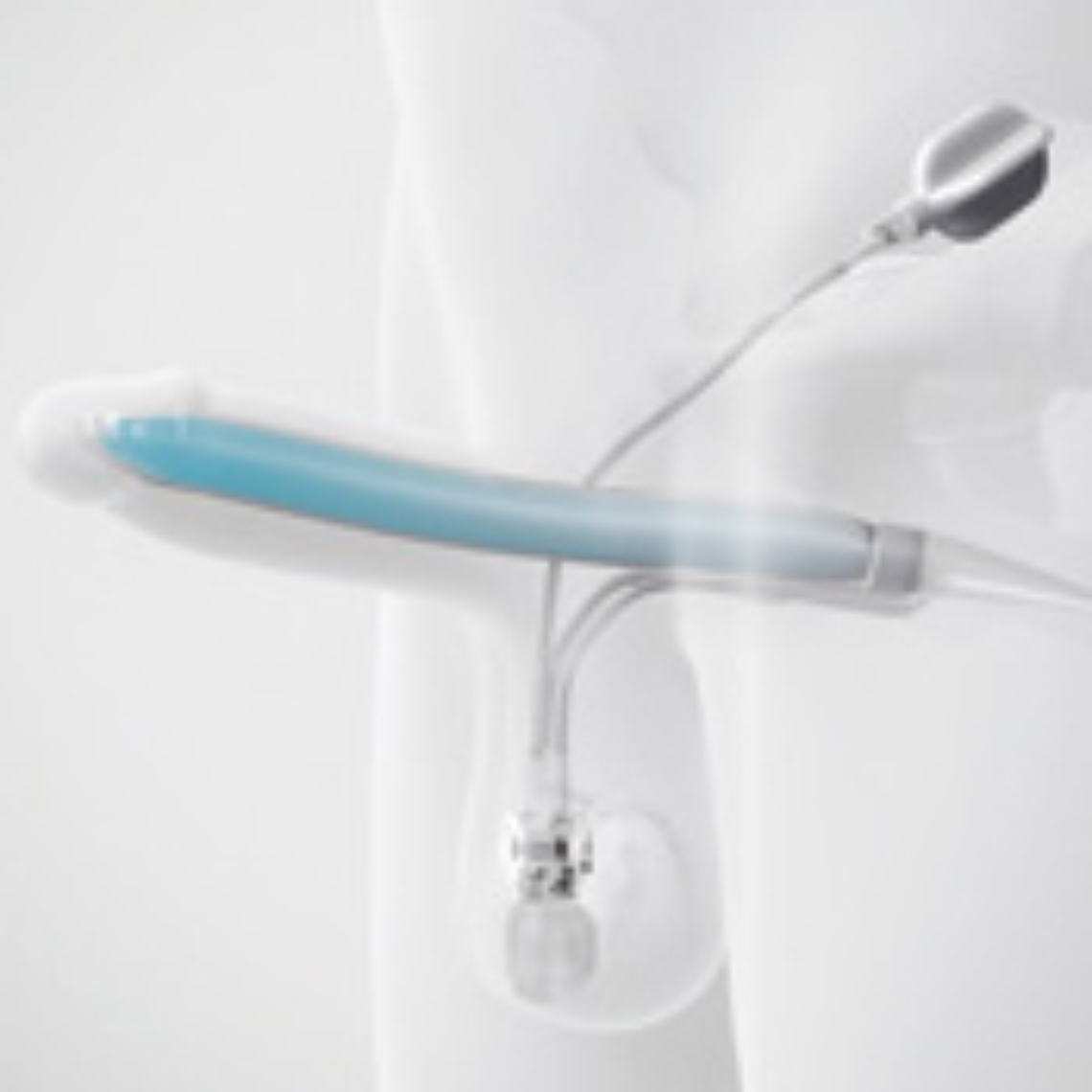It’s time to take back control.
Speak with one of our representatives who can guide you through next steps.
Representatives are available Monday through Friday, 8:00 a.m. to 5:00 p.m. Central time.
Why wait? Call today.
If you have any questions or want to find a qualified erectile dysfunction specialist near you, call now.
Representatives are available Monday through Friday, 8:00 a.m. to 5:00 p.m. Central time.
Not ready to call today? Schedule a reminder.
After being diagnosed with erectile dysfunction, the next step is to find the right treatment option from the right physician – one who specializes in erectile dysfunction and men’s sexual health.
ED is common with up to 40% of men affected by the age of 40.12 The occasional difficulty in getting or keeping an erection is normal. It starts to become a problem when you’re regularly having difficulty getting or maintaining an erection. ED is not an inevitable part of aging.12 The sooner you seek treatment, the sooner you can feel like yourself again.
There are many treatment options available depending on the reason for your ED and your preferences for treatment. It is important to explore and learn about all alternative treatment options. Your doctor will be able to explain all your options and help you choose the best option for you.
One of those options is a penile implant. If pills or injections haven’t worked for you, a penile implant can be an effective solution for ED.
What is a penile implant?
A penile implant is an erection assistance device that is designed to help a man get an erection and is completely hidden inside the body. It puts the man back in control of his body and can be used at any time. Unlike other treatments for erectile dysfunction (ED), a penile implant restores spontaneity and allows a man to get an erection without any planning or waiting.1
The device is implanted during a procedure through a small opening in the skin. Most men return home from the procedure on the same day and are able to resume sexual activity upon his doctor’s clearance, typically between 4–6 weeks.2
Why should I get a penile implant?
While pills are often offered as a first line therapy for ED, they often aren’t a long-term solution.6 75% of patients treated for ED are initially treated with pills.3 Half of these patients will discontinue treatment in the first year due to reasons such as medication failure, cost or concerns about side effects or long-term safety.4 When these fail, some patients will move on to try another brand of pills, others will try penile injections and some will move on to a penile implant.
For patients who try oral medications and penile injections as second line treatments:

of cases pills are not effective5

of injection cases fail to work or men experience priapism (erection lasting 4 hours or more)5
For some patients, when pills and injections no longer work, they move to a penile implant. Other patients may choose a penile implant right away.7 Penile implants have been shown to be a more cost-effective5 long-term ED treatment.6
To learn more about the costs of different ED treatments, click here.
Titan® Inflatable Penile Implant
The Titan inflatable penile implant was designed to mimic the look and performance of a natural erection.1 The Titan implant is made with a unique material called Bioflex®, which is a material that is safe for your body and is stronger than silicone.8 The Bioflex material was specifically engineered for penile implants to make them stronger9 and more durable8 than other penile implants available.1
The Titan implant has three parts:
The Titan implant features:
- Easy to use and activate1
- One-step deflation1
- Not visibly noticeable when flaccid1
- Acts and feels more like a natural erection1
- Maximizes the girth and rigidity of the penis9,10
How does the Titan® implant work?
When you squeeze the pump in the scrotum, fluid moves from the reservoir into the cylinders in the shaft of the penis, creating an erection.
When you press the deflate button on the pump in the scrotum, the fluid moves out of the penis and back into the reservoir for a natural looking flaccid state.
View this video for a demonstration.
Reasons to consider a penile implant

A Discreet Treatment for ED
A penile implant is not noticeable when the penis is flaccid. Your partner won’t be able to tell you’ve had an implant to treat your ED unless you tell them.1

Patient Satisfaction Rates
Patients report a 98% satisfaction rate for the Titan penile implant. Partners of those with a Titan implant are also highly satisfied with a 96% satisfaction rate.13

Minimal Recovery Time
Every man is different, but a typical recovery time after a penile implant procedure is four to six weeks. After you’r partner has’ve fully recovered, you can begin enjoying sex again.2

Cost Effective
Penile implants have been shown to be the most cost-effective ED treatment over a 10-year period.5

Insurance Coverage
Penile implants are prescribed by a physician and are generally covered by most insurance plans, including Medicare.11

Spontaneity
Penile implants give patients the ability to have an erection instantly and spontaneously, any time.1
Find a Specialist Near You
Choosing to take control over your ED is the first step in finding a solution. Starting the conversation with someone who can help is the next. You need a specialist with the skills and experience you can trust. Enter your zip code to see a listing of ED clinics and urology doctors in your area. Each listing provides the physicians in the country based on criteria such as the number of procedures performed, contributions to research in the field of erectile dysfunction, and leadership in professional associations for urologic physicians.
Centers of Excellence are staffed with the top urology physicians in the country based on criteria such as the number of procedures performed, contributions to research in the field of erectile dysfunction, and leadership in professional associations for urologic physicians.
Disclaimer: This directory was created and is maintained by Coloplast. It is intended to support patients who want to learn more about treatment options for erectile dysfunction (ED), urinary incontinence (UI), and testicular implants by helping connect them to physicians who have demonstrated qualifications and interest in providing quality care for these conditions. Names and details in this directory are provided for your information only. Decisions regarding choice of physician and treatment are a patient’s responsibility, as is all communication and interaction with listed medical professionals.
Physicians listed on the Physician Locator, with or without Coloplast COE Program designation, pay no fee for inclusion. Some physicians on this list may purchase products from, provide consulting services to and/or be a party to a co-marketing agreement with Coloplast. Coloplast makes no representations or warranties regarding, and shall not be responsible for, the competencies or skill level of any of the physicians listed on the Physician Locator or designated as COEs or the quality of their procedural outcomes. You and your physician must determine the right procedure for you.
Real stories from real recipients.
What does life look like after receiving a Titan penile implant? Hear directly from men who have been where you are. If you’re ready to have a conversation, our patient educators are ready to answer your questions and share their stories.
References
1 Data on file at Coloplast.
2 Treatment for Erectile Dysfunction. NIH: National Institute of Diabetes and Digestive and Kidney Diseases. https://www.niddk.nih.gov/health-information/urologic-diseases/erectile-dysfunction/treatment. Accessed March 2023.
3 Frederick LR, Cakir OO, Arora H, Helfand BT, McVary KT. Undertreatment of erectile dysfunction: claims analysis of 6.2 million patients. J Sex Med. 2014 Oct;11(10):2546-53.
4 Jannini EA, Droupy S. Needs and Expectations of Patients with Erectile Dysfunction: An Update on Pharmacological Innovations in Phosphodiesterase Type 5 Inhibition with Focus on Sildenafil. Sex Med. 2019 Mar;7(1):1-10.
5 Moses RA, Anderson RE, Kim J, Keihani S, Craig JR, Myers JB, Lenherr SM, Brant WO, Hotaling JM. Erectile dysfunction management after failed phosphodiesterase-5-inhibitor trial: a cost-effectiveness analysis. Transl Androl Urol. 2019 Aug;8(4):387-394.
6 Miller LE, Khera M, Bhattacharyya S, Patel M, Nitschelm K, Burnett AL. Long-Term Survival Rates of Inflatable Penile Prostheses: Systematic Review and Meta-Analysis. Urology. 2022 Aug;166:6-10.
7 Burnett AL, Nehra A, Breau RH, Culkin DJ, Faraday MM, Hakim LS, Heidelbaugh J, Khera M, McVary KT, Miner MM, Nelson CJ, Sadeghi-Nejad H, Seftel AD, Shindel AW. Erectile Dysfunction: AUA Guideline. J Urol. 2018 Sep;200(3):633-641.
8 Pritchard, Charles, MD, et al. “Comparison of AMS 700 CX and Coloplast Titan Inflatable Penile Prosthesis Cylinders Subjected to In-Vitro Cyclic Buckling.” Sexual Medicine Society of North America Fall Meeting, Poster 111, 2008.
9 Scovell JM, Ge L, Barrera EV, Wilson SK, Carrion RE, Hakky TS. Longitudinal and Horizontal Load Testing of Inflatable Penile Implant Cylinders of Two Manufacturers: An Ex Vivo Demonstration of Inflated Rigidity. J Sex Med. 2016;13(11):1750- 1757.
10 Pescatori ES, Goldstein I. Intraluminal device pressures in 3-piece inflatable penile prostheses: the “pathophysiology” of mechanical malfunction. J Urol. 1993 Feb;149(2):295-300.
11 Does Medicare Cover Penile Implants? Medicare.org. https://www.medicare.org/articles/does-medicare-cover-penile-implants/. Accessed October 2022.
12 Feldman HA, Goldstein I, Hatzichristou DG, Krane RJ, McKinlay JB. Impotence and its medical and psychosocial correlates: results of the Massachusetts Male Aging Study. J Urol. 1994;151(1):54-61.
13 Garber BB. Mentor Alpha 1 inflatable penile prosthesis: patient satisfaction and device reliability. Urology. 1994 Feb;43(2):214-7. doi: 10.1016/0090- 4295(94)90047-7. PMID: 8116118.
PM-29417
Important safety information
Titan® & Titan Touch Inflatable Penile Prosthesis
The Titan Inflatable Penile Prosthesis is a surgically implanted mechanical penile implant intended for the treatment of erectile dysfunction in men. The Titan implant is a 3-piece fluid-filled system manually operated to produce and sustain an erection for sexual intercourse.
Indications
The Titan Inflatable Penile Prosthesis is indicated for male patients with erectile dysfunction who are considered to be candidates for implantation of a penile prosthesis.
Contraindications
The Titan implant is not for use in patients who have one or more of the following conditions: 1) have an active infection, particularly urinary tract or genital infection, 2) are sensitive or allergic to silicone or polyurethane, 3) have ongoing difficulty urinating or emptying the bladder (e.g., bladder outlet obstruction or neurogenic bladder), or 4) unwilling to undergo any further surgery for device revision.
Warnings
Patients should consider the warnings, precautions and potential complications associated with the use of this product, which may include the following: potential for resurgery (note: device is not a lifetime implant). Implantation makes latent natural erections, as well as other interventional treatment options, impossible. Implantation may result in penile shortening, curvature or scarring. Pre-existing abdominal or penile scarring or contracture may make surgical implantation more complicated or impractical. Diabetic, as well as immunocompromised patients, may have an increased risk of infection which could result in permanent damage to tissue/organs. Excessive stresses from rigorous exercise and vigorous masturbation/intercourse could lead to device damage. Certain stresses and pressures (straddle seating, obesity, etc.) could lead to involuntary inflation or deflation. Post-implant penile size, girth and angle can vary based on patient anatomy, implant size, level of inflation, and presence of Peyronie’s disease.
Precautions
Patients with spinal cord injury may have an increased risk of infection. This device may be used to treat erectile dysfunction in the presence of Peyronie’s disease. Although the implant is not visible, depending on the placement (submuscular) the reservoir may be palpable.
Patients should consider the following factors which could lead to increased risk of failure and can be critical to the eventual success of the procedure: ability and willingness of the patient to follow instructions; associated psychological status (e.g., psychogenic erectile dysfunction, inappropriate attitude or motivation); health conditions which hamper sexual activity (such as severe angina) may prevent successful use of this device; manual dexterity problems; and lack sufficient manual dexterity or strength necessary to operate the device.
Impact injuries to the pelvic or abdominal areas (e.g., sports injuries) can result in damage to the implant which may necessitate replacement of the device. Contracture of tissue around the pump can cause unnatural firmness in the scrotum and involuntary inflation or deflation. The device may fail to deflate and/or deflation of the device may be slow or difficult for some patients. Device malfunctions may result in the inability to inflate or deflate the device. Removal of the device without timely reimplantation of a new implant may complicate subsequent reimplantation.
Potential Complications
Adverse events are known to occur with penile protheses procedures and implants; some may require revision surgery or removal of the implant. Adverse events following penile protheses implantation may be new onset (de novo), persistent, worsening, transient, or permanent.
Adverse events may include but are not limited to: inability to pull foreskin back from tip of uncircumcised penis (acquired phimosis); abnormal wound healing/adhesion/scar tissue; bladder storage symptoms/urinary retention; tightening, shortening, deformity or curvature of penis (capsular contracture, induration); discomfort/pain; injury to tissue or organs (perforation/erosion/extrusion) resulting in damage or loss of tissue (necrosis); open tunnel between tissue or organs (fistula); foreign body reaction/allergic reaction/sensitivity; bleeding/hemorrhage or collection of blood or fluid outside of tissue or vessels (hematoma/seroma); hernia; Infection/urinary tract infection; redness or swelling (inflammation/edema); difficult or painful intercourse (dyspareunia/sexual dysfunction); obstruction/occlusion; numbness or decreased sensation (e.g., hypoesthesia); and urinary incontinence. The occurrence of these events may require one or more subsequent surgeries which may or may not always fully correct the complication.
This treatment is prescribed by your physician. Discuss the treatment options with your physician to understand the risks and benefits of the various options to determine if an inflatable penile implant is right for you.
Caution: Federal law (USA) restricts this device to sale by or on the order of a physician.
PM-15451 / Feb 2024


